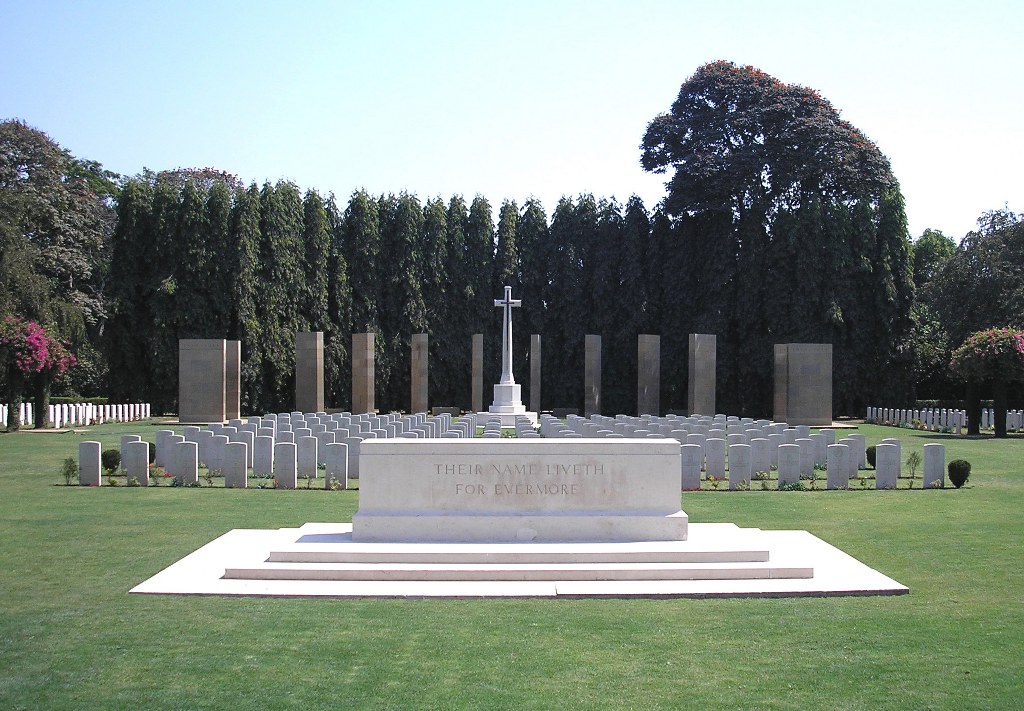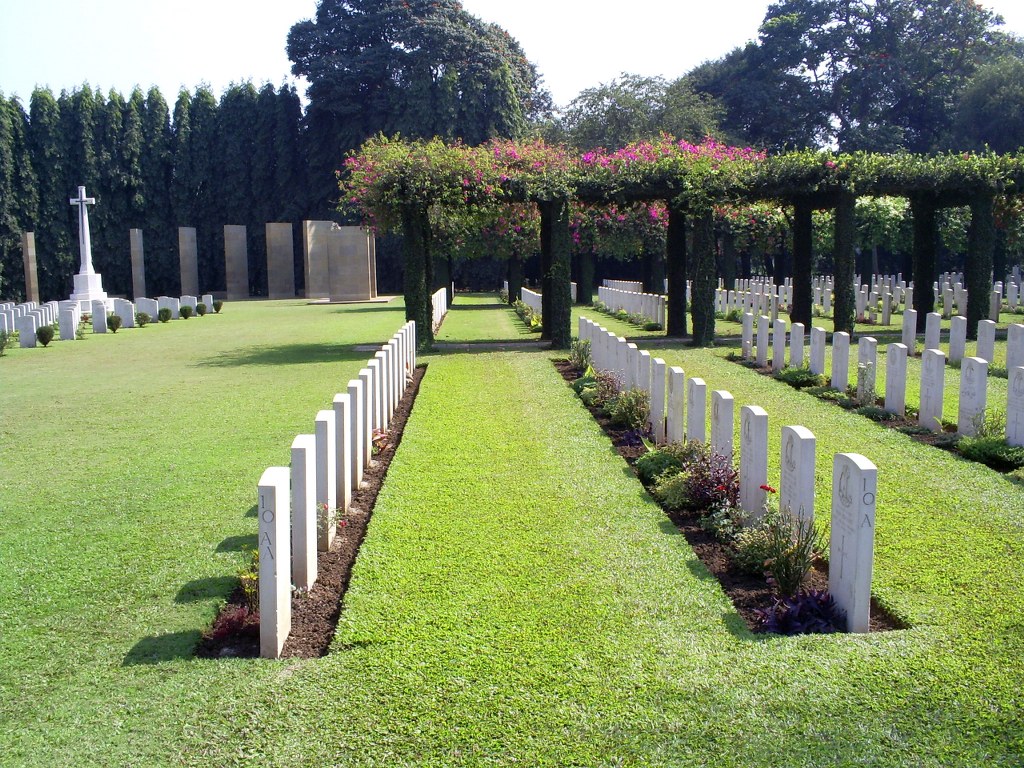Kirkee War Cemetery
- Country India
- Total identified casualties 1668 Find these casualties
- Identified casualties from Second World War
- GPS Coordinates Latitude: 18.55203, Longitude: 73.85638
Please note
Please be aware of the following:
- The Cemetery is located next to a river and on a busy main road. Unfortunately, there is no parking available.
- Mosquitoes carry Malaria and Dengue Fever in this area.
- There is a large flight of steps at the entrance to the Cemetery.
Location information
Kirkee, also known as Khadki, is a Military Cantonment adjoining the large university town of Poona on the Plateau above Mumbai (Bombay). The War Cemetery is about 5-6km from Pune Railway Station. The Cemetery is located on Mula Road.
Visiting information
ARRIVAL
The route to the cemetery is signposted.
PARKING
Parking is directly in front of the main gate on a paved area or in a small gravel patch at the side of the main road at the front of the cemetery, there are spaces for 1 or 2 vehicles. The road is very busy with fast moving traffic.
Parking is within 3 metres of the main gate.
The ground is flat and firm.
ACCESS, LAYOUT AND MAIN ENTRANCE
The main entrance is through two separate mid-level (waist height) two section metal gates, on either side of the gravel parking area. Both are approximately 2 metres wide and open inwards into the cemetery onto raised paved landings. The gates are opened by raising a handle at the top of the gate.
There are 10 stone steps going down into the cemetery from either gate, and lead down to the burial area, with another large central platform at the bottom of the two sets of steps. Two long steps, the width of the central platform lead down to grass, with a 75 mm dirt strip between the bottom step and the grass. There are no handrails. The Register Box is located in the wall behind the central platform.
The Stone of Remembrance is directly opposite the main entrance.
The Cross of Sacrifice is at the rear of the cemetery in front of the Kirkee Memorial, both in line with the Stone of Remembrance.
There are stone bench seating areas on both sides and along the front of the cemetery. Multiple benches form part of the Kirkee Memorial.
The internal paths are grass, the ground is gently sloped. There are stone pathways inside the entire length of the pergolas.
ALTERNATIVE ACCESS
At the southern end of the cemetery on the main road is a service entrance. There is a latched 1.60-metre-high metal gate, approximately 1.5 metres wide and opens inwards. The ramp is located approximately 400 mm below the footpath and requires access from the busy main road.
The service entrance has a concrete path leading into the cemetery, with a raised concrete rounded hump at the road interface. The ramp is quite steep and comprised of narrow concrete slabs with irregular spacing and levels between each slab.
ADDITIONAL INFORMATION
The Cemetery is open Monday to Friday between 08:00 and 17:00
History information
KIRKEE WAR CEMETERY was created to receive Second World War graves from the western and central parts of India where their permanent maintenance could not be assured.
The cemetery contains 1,668 Commonwealth, 1 Polish and 1 American burials of the Second World War and 7 non-war burials. In addition, in 1962 the graves of 629 First World War servicemen were brought to the cemetery from Bombay (Sewri) Cemetery and reburied in the grassed area between the Memorial and the Cross of Sacrifice. They are commemorated by name on the KIRKEE MEMORIAL.
The KIRKEE MEMORIAL stands within the cemetery and was built to commemorate more than 1800 servicemen and women who died in India during the First World War, who were buried in civil and cantonment cemeteries in India and Pakistan whose graves were considered to be unmaintainable after India gained its independence in 1947. For several years now, the Commission has been working to reinstate the original graves of a large number of these individuals and to date, the official commemoration of over 1000 individuals have been reverted back to their original burial location. However, their names will remain on the memorial for the foreseeable future.
On the same memorial are commemorated almost 200 East and West African servicemen who died in non-operational zones in India in the Second World War, and whose graves either cannot be located or are so situated that maintenance is not possible.






